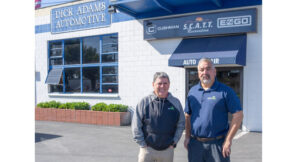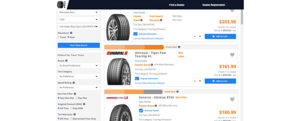OEMs are again trying to influence vehicle ownership as well as where they get repairs performed
Editor’s note: Paul E. Grech owned the former San Franciso shop, Allied Engine & Auto Repair, before retiring. In this column series, Grech shares his experiences as a shop owner.
Those that do not learn from history are doomed to repeat it, as the saying goes.
In 1994, the car manufacturers decided that independent service providers were not capable enough to keep up with the new technology on cars coming down the line and, just as much, wanted to corner the market on repairs. So they tried to lock us out of vehicle data — that’s when I got a call from John Goodman, our ASCCA executive director, back then.

He wanted to know if I could get some publicity out about it. In addition to owning Allied Engine & Auto Repair, I was a model at the time (that’s another story). The next day I saw an article in the San Francisco Chronicle about how to avoid getting ripped off when getting an appliance repaired.
I called the reporter who wrote the article and explained that the OEMs were trying to lock independents out of vehicle repair and service. When he asked why I was doing this, I replied, “It isn’t about me, it’s about the consumer.”
Consumers need a place to go to for a second opinion about a recommended repair, just as you would for a suggested medical operation. They also need an alternative to dealership auto service. That’s us — the aftermarket.
I suggested to the reporter that he call a dealership of the make of car he owns and tell them he has an 11-year-old model of the brand and that it needs some work done to it. I told him they’ll say they won’t work on anything over 10 years old because they can’t get the parts and they have no one who remembers how repair a car that old.
Well, the news team showed up at my shop within half an hour, and I got the front page of the newspaper. The coverage helped drop automakers’ efforts to lock the aftermarket out of the information system. I am not saying I did it all, but the publicity was a big embarrassment to them. The article appeared in the Aug. 29, 1994, edition of the paper. The reason I’m writing about this now is because it’s happening again.
On some late model BMWs you can’t align the suspension because the vehicle has an airbag suspension system on it and a shop has to pay a fee to access the OEM data. They also have a new policy: When the lease expires or the consumer trades it in, they can turn off certain accessories such as heated seats, remote start and others by over-the-air updates — or no updates. They then will try to resell it to the second buyer.
Another manufacturer can also see if a vehicle owner takes their car to an unauthorized repair facility. They will turn off the fast charge app if you do. If the OEMs are trying to influence vehicle ownership, just try to imagine the efforts they will continue to set forth on the aftermarket’s ability to repair cars.







Comments are closed.